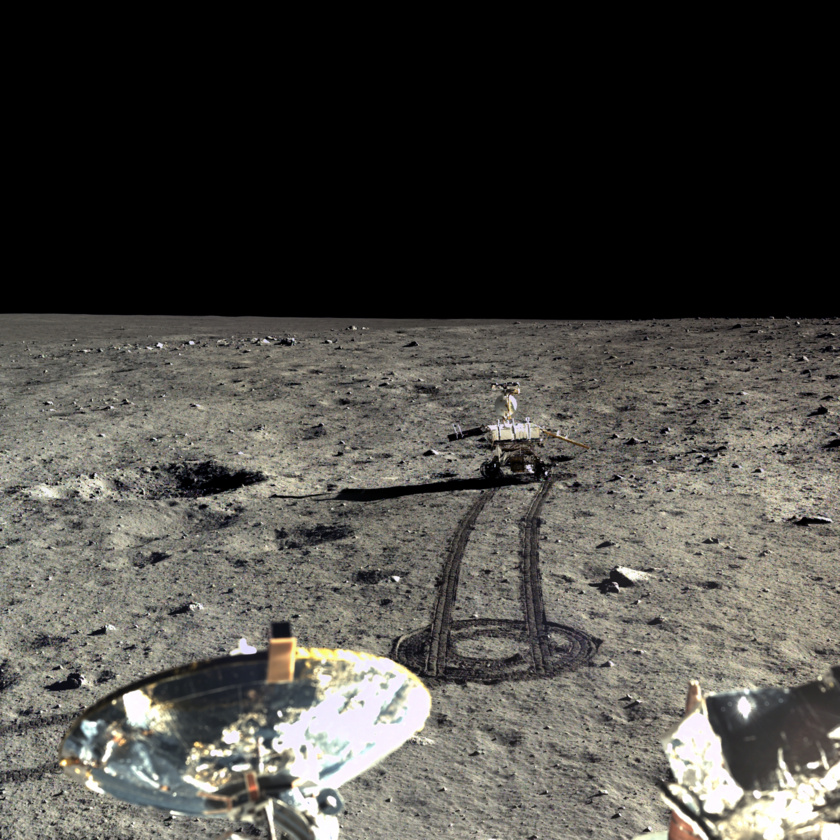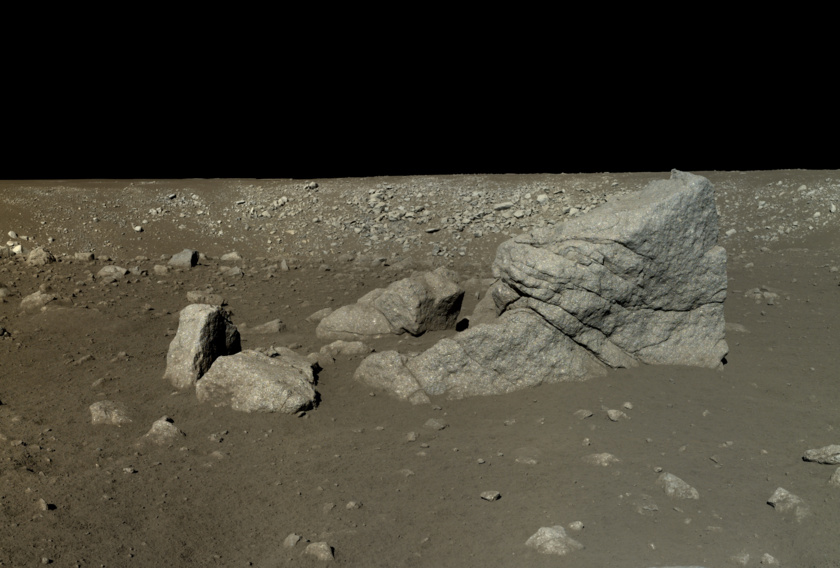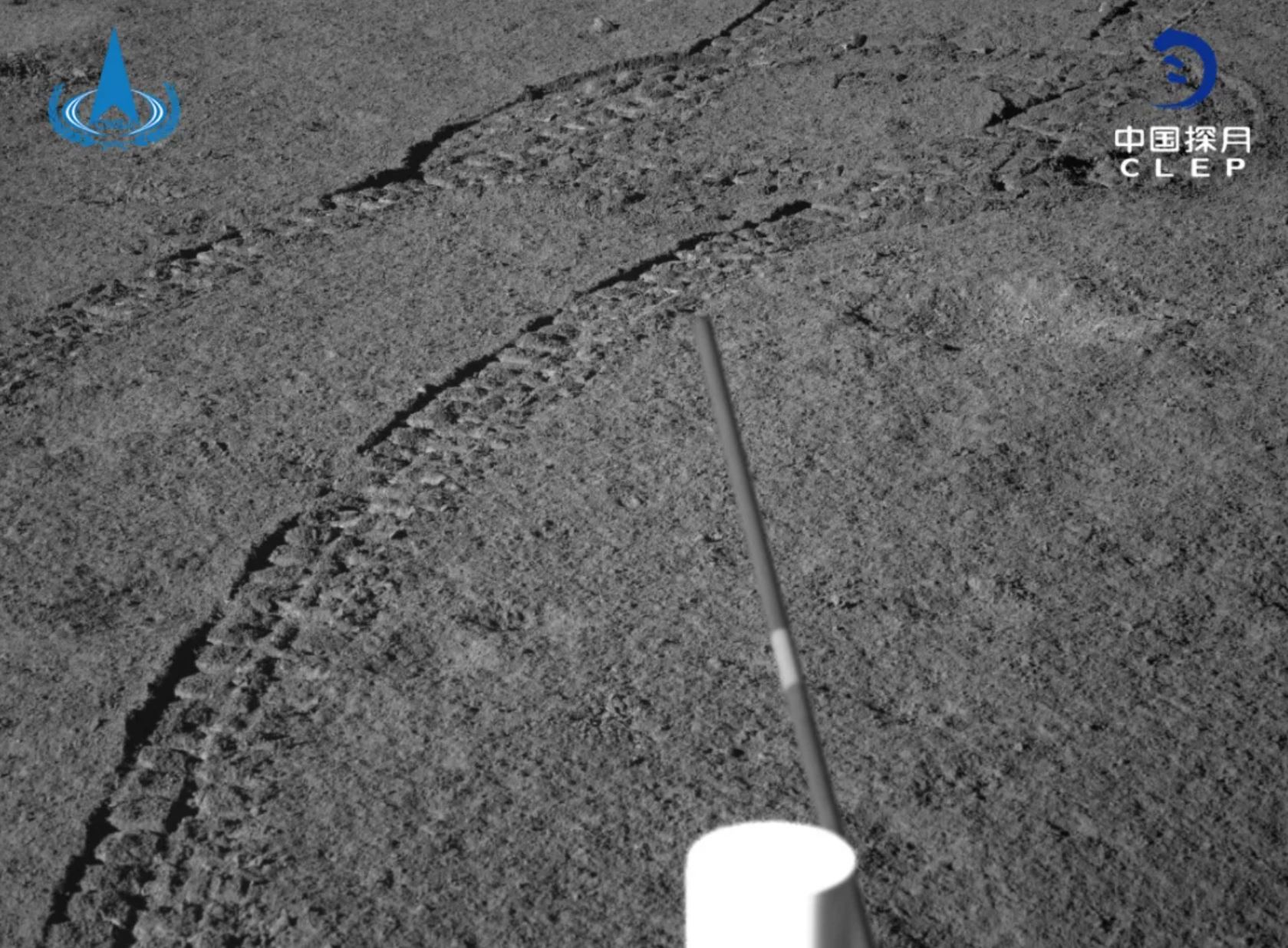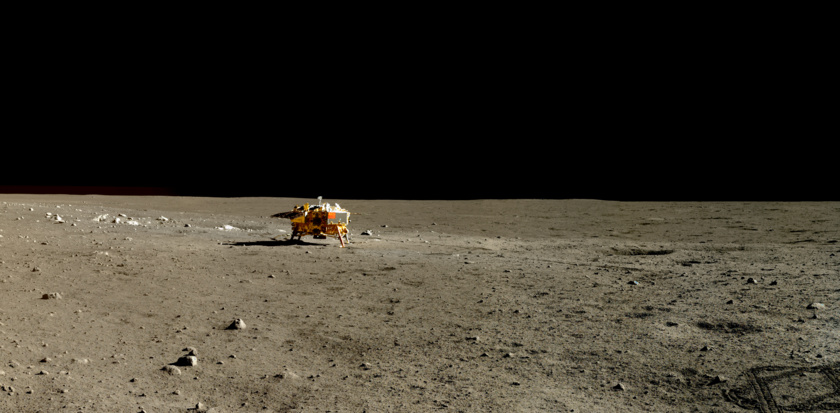China's Chang'e 3 lunar lander still going strong after 7 years on the moon

China has lunar spacecraft operating on both the near and far sides of the moon, according to an update from the China National Space Administration.
The Chang'e 3 moon mission, which includes a lunar lander and a small rover, set down in Mare Imbrium back in December 2013 to make China only the third country to soft land on the moon.
And though the rover bit the lunar dust after 31 months on the surface, the mission lander is still operational, more than 2,400 days after landing, the Lunar Exploration and Space Program Center stated in early September.
Related: Chang'e 3 photos: China's 1st moon lander & rover mission
One science payload, the Lunar Ultraviolet Telescope, is understood to still be working, according to Jing Wang of the National Astronomical Observatories in Beijing, who manages the telescope. The automatic instrument has been monitoring variable stars and even returned an image of the Pinwheel Galaxy (M101) from the moon.

Radio amateurs have confirmed Chang'e 3 activity by periodically picking up signals from the lander. The solar-powered spacecraft operates during the lunar daytime (which lasts around 14 Earth days) and communicates via X- and S-band with ground stations in China, at Kashi in the northwest and and Jiamusi in the northeast. The lander is kept warm during the harsh cold of lunar nights by a radioisotope heater unit.
Chang'e'3 Lunar Lander is currently active on X-Band off the Moon! Downlink 8495.985MHz, massive signal! pic.twitter.com/JY6siv93FDJune 1, 2020
The lunar rover, named Yutu (which translates to "Jade Rabbit"), lost the ability to rove in January 2014 — near the end of the mission's second lunar day — after traveling a total of 377 feet (114 meters) across the lunar surface. At the time, China's state news outlet Xinhua reported that Yutu had experienced a "mechanical control abnormality" caused by the "complicated lunar surface environment."
Breaking space news, the latest updates on rocket launches, skywatching events and more!
Yutu's mission was designed to last just three months, but it continued to function while stationary until mid-2016. During its mission, Yutu set a new record for operating on the lunar surface longer than any other moon rover.
Related: Dead or alive, China's Yutu rover says much about how we relate to robots (op-ed)

Yutu continues to make contributions long after its death, with new science results still coming from data collected by the rover. Researchers from the China University of Geosciences and other institutes recently discovered evidence of three relatively young layers of basalt, or volcanic rock, at the Chang'e 3 landing site and published their findings on Aug. 17 in the journal Geophysical Research Letters.
Previous studies suggested the region formed from a single, thick lava flow. The findings are based on data from Yutu's ground-penetrating radar, which picks up reflected signals from electromagnetic pulses to provide insights into the lunar subsurface.

Chang'e 4 starts lunar day 22
Meanwhile, on the far side of the moon, China's Chang'e 4 mission — a successor to Chang'e 3 — is well into its 22nd lunar day, which began on Sept. 10.
Like Chang'e 3, the Chang'e 4 mission includes a lander and a rover named Yutu 2. After snoozing through the lunar night, with no sunlight to power its solar panels, the rover woke up and resumed activities on Sept. 10 at 11:54 p.m. EDT (0354 GMT on Sept. 11) with the lander following at 5:15 p.m. EDT (2115 GMT) on Sept. 11.

New image of lunar regolith taken by Yutu 2 released September 2020.

New image of lunar regolith taken by Yutu 2 released September 2020.
Yutu 2, which has driven 1,704 feet (519.29 m) across the vast Von Kármán crater, will continue its progress to the northwest of the lander in the direction of a basaltic region of interest to scientists.
Chang'e 4 was initially manufactured as a backup to Chang'e 3 and made the first ever soft landing on the far side of the moon in January 2019.

A team from the Aerospace Information Research Institute of the Chinese Academy of Sciences have determined the age of the nearby Finsen crater to be about 3.5 billion years. The team used digital mapping data from Chang'e 2 — a lunar probe that orbited the moon for eight months in 2010-2011 — to count craters and the ground-penetrating radar readings taken by Yutu 2 to analyze regolith growth in Von Kármán crater to calculate its age.
Follow us on Twitter @Spacedotcom and on Facebook.

Andrew is a freelance space journalist with a focus on reporting on China's rapidly growing space sector. He began writing for Space.com in 2019 and writes for SpaceNews, IEEE Spectrum, National Geographic, Sky & Telescope, New Scientist and others. Andrew first caught the space bug when, as a youngster, he saw Voyager images of other worlds in our solar system for the first time. Away from space, Andrew enjoys trail running in the forests of Finland. You can follow him on Twitter @AJ_FI.
